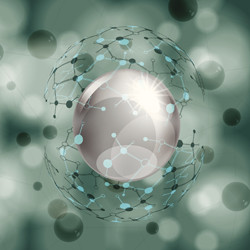Can we understand the particle excitations allowed by the strong force?
The most complete model of particle physics widely accepted by the scientific community is the so-called Standard Model. It includes 12 matter particles and four force particles that govern their interactions. According to the theory, the strong force (carried by the gluon) ‘glues’ quarks together into the familiar protons and neutrons as well as into other particles called mesons. Most of the mass in the Universe results from the energy of particles interacting via the strong force. Understanding the strong force is thus fundamental to explanations of the world around us on all scales. EU-funded scientists developed new theoretical calculations and compared them against experimental results within the context of the project 'Excited charmonium spectroscopy from lattice QCD’ (LQCDMESONSPEC). The test case was a meson called charmonium made of a charm quark-antiquark pair. During the past decade, extensive and exciting discoveries regarding the spectra of charmonium have been difficult to explain with standard techniques. LQCDMESONSPEC successfully extended new methodologies exploiting powerful computers to explore the spectroscopy of mesons. Of particular importance was the theoretical investigation of meson excitations, including those newly observed. Scientists developed compelling descriptions supporting the presence of hybrid mesons. Here, gluons do not just bind quarks together but act as a constituent on par with the other matter particles. This ground-breaking new insight could enhance descriptions provided by the Standard Model. The work has received considerable attention from the scientific community including numerous invitations to present the results at international conferences. LQCDMESONSPEC has provided the foundation for further investigations that will contribute a deeper understanding of the fundamental behaviour of matter at the subnuclear scale.







